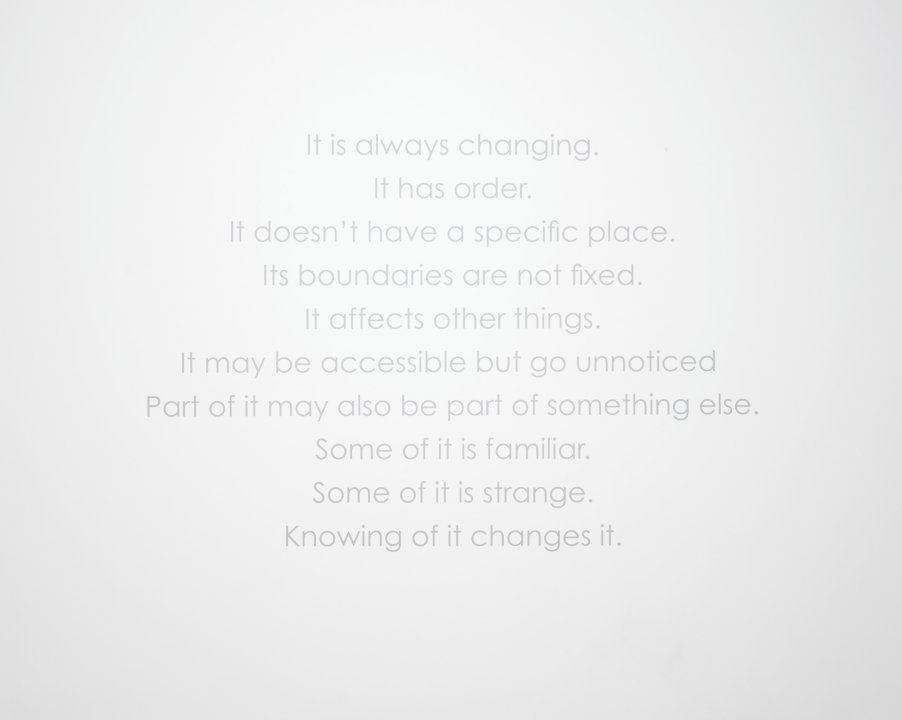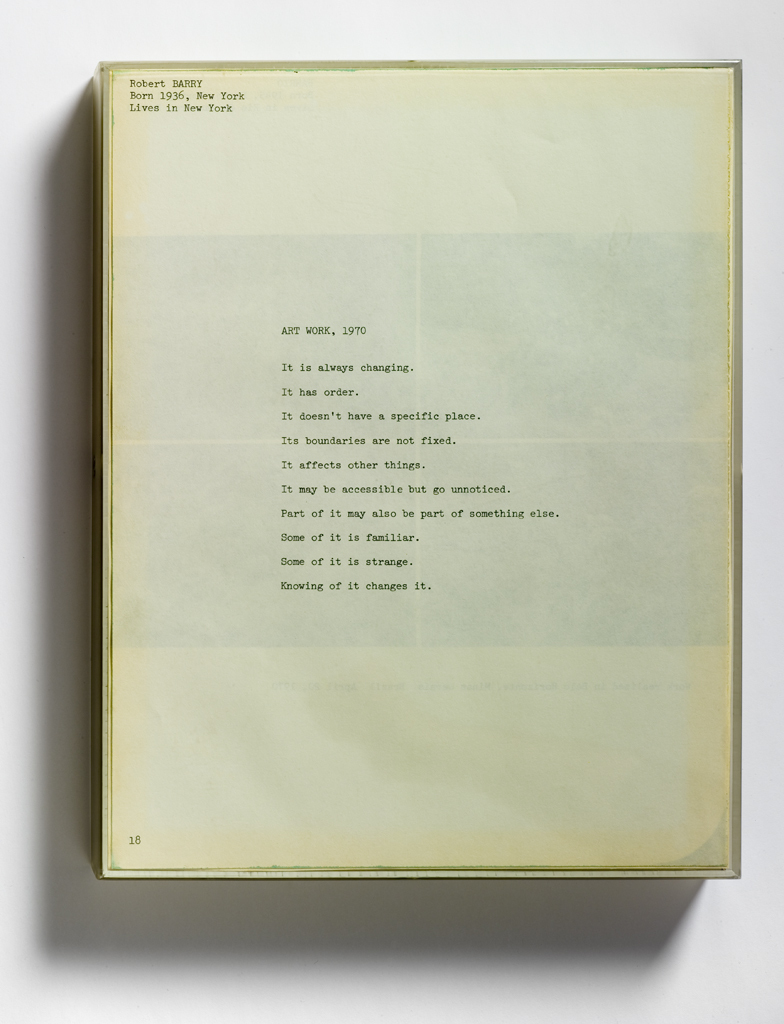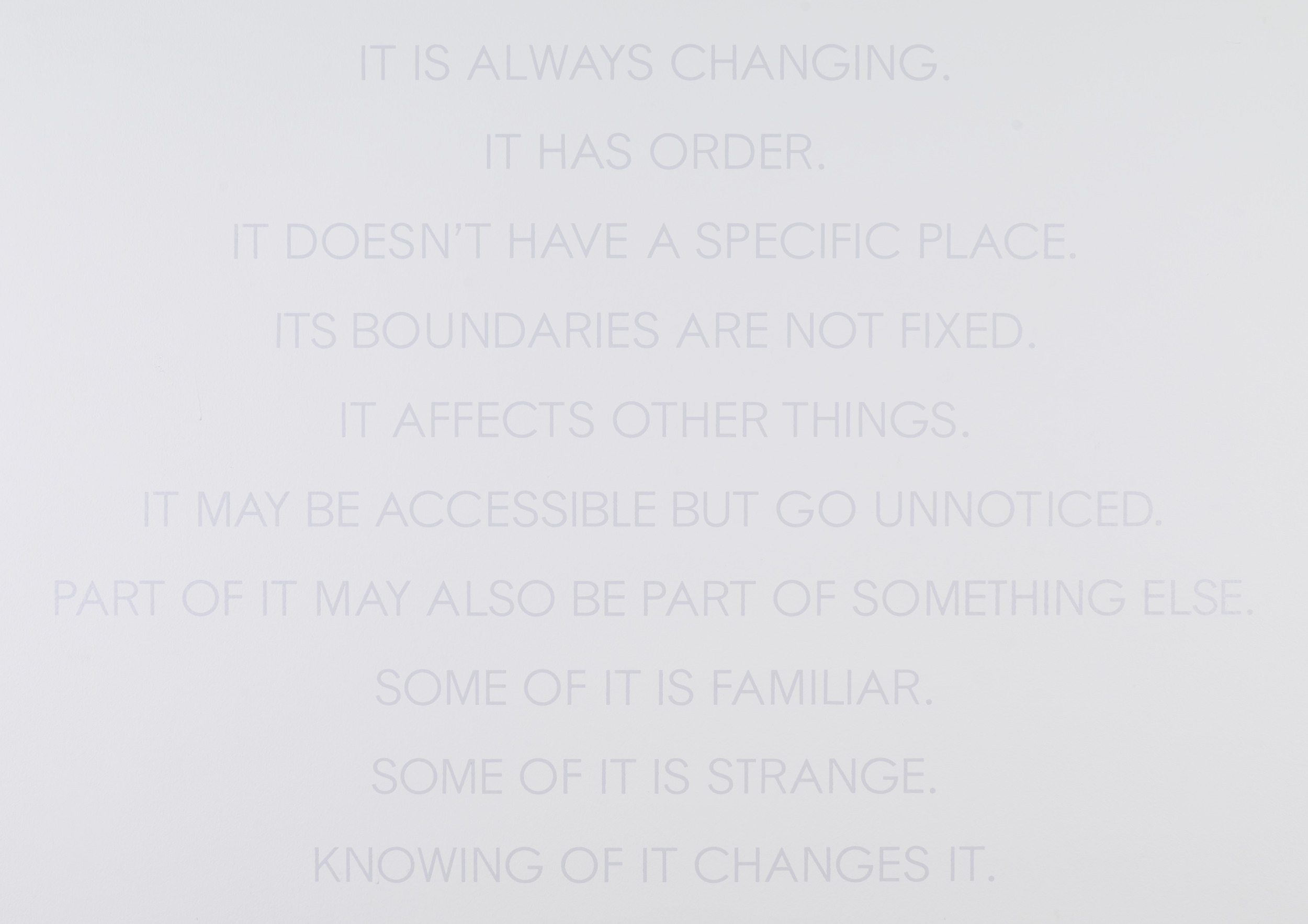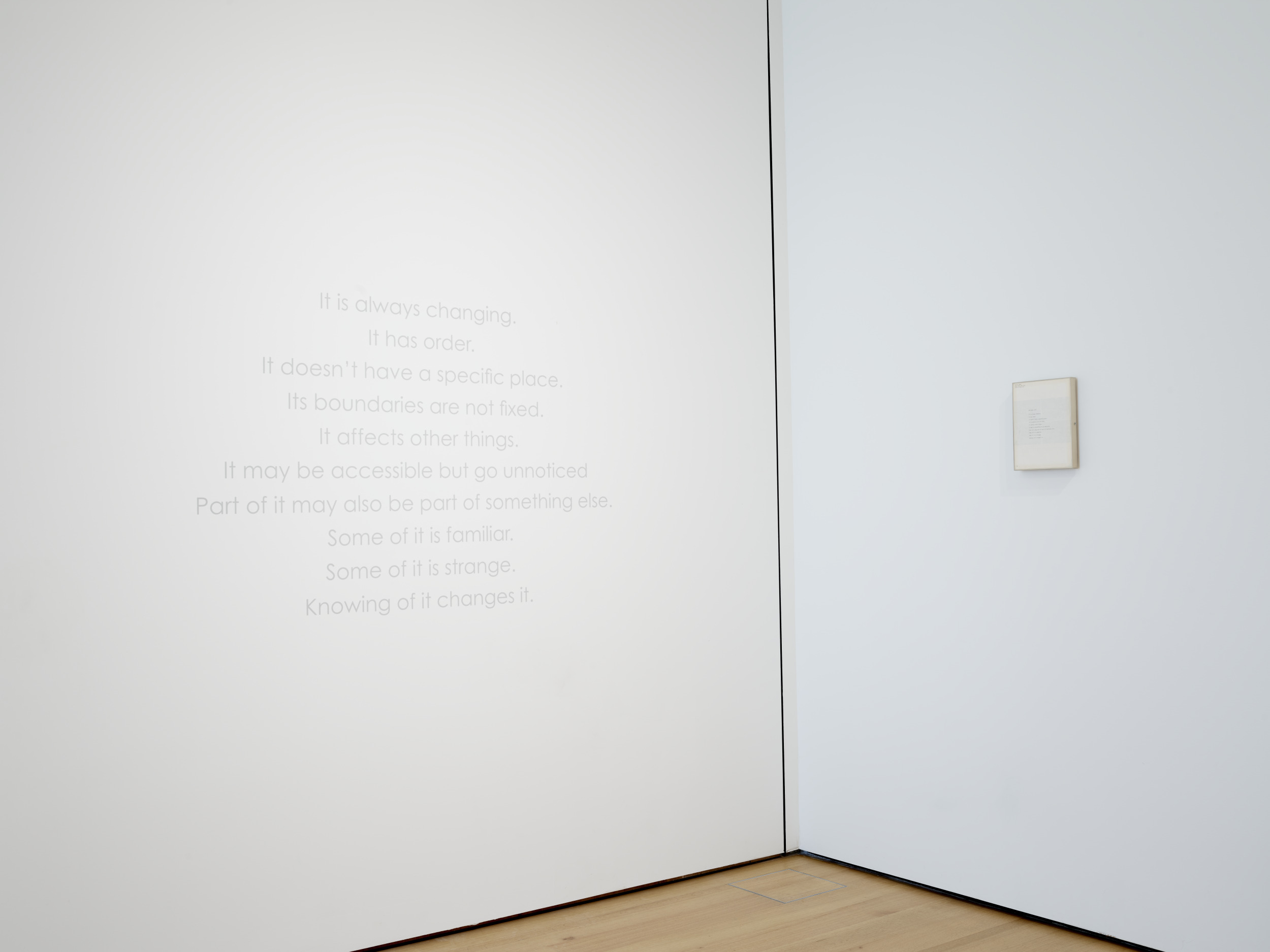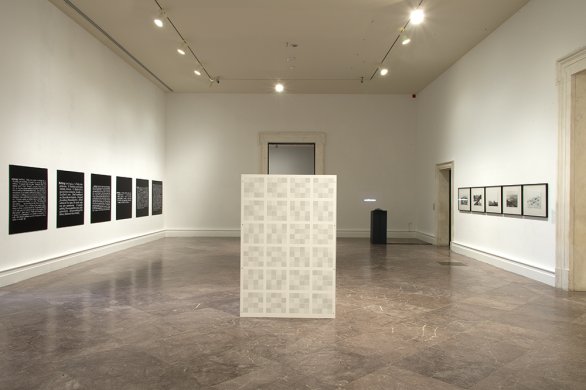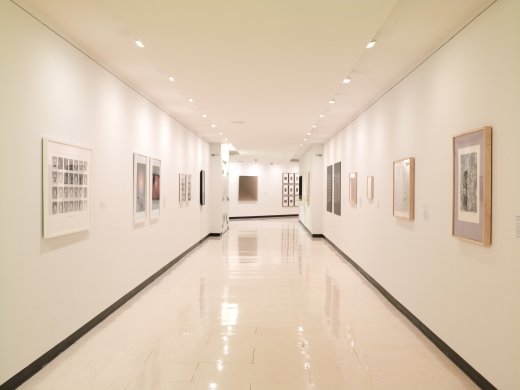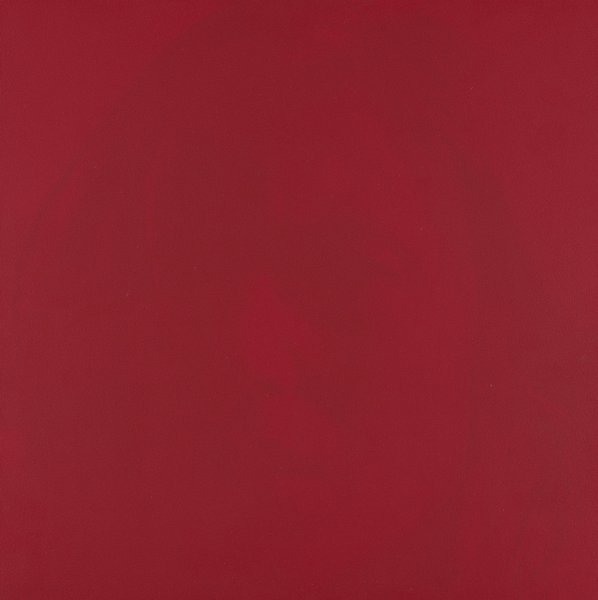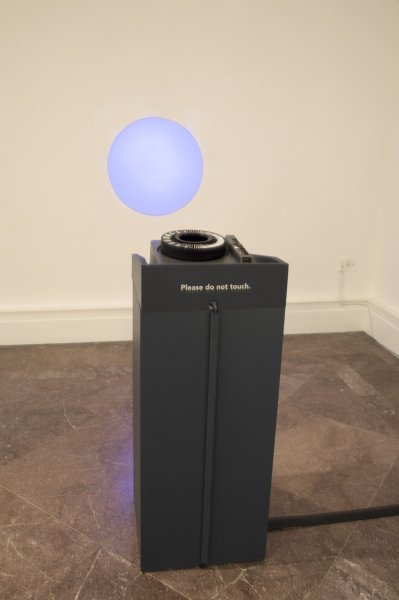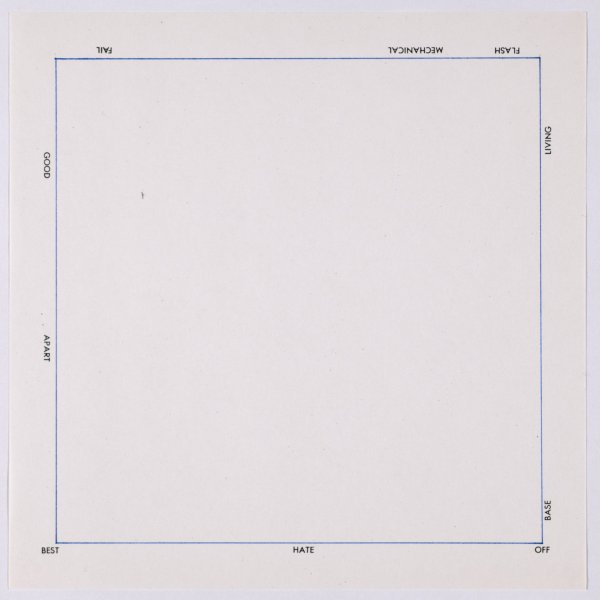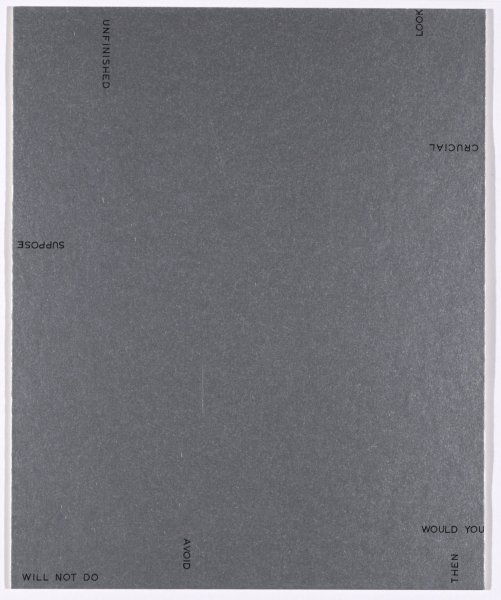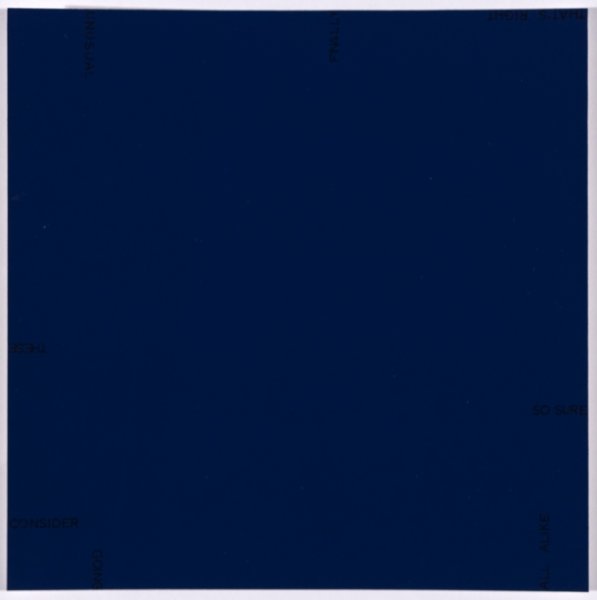Robert Barry
American, born 1936
Art Work (It Is Always Changing . . .), 1970
Artwork Details
Currently on View
Materials
wall-based installation accompanied by certificate
Measurements
sheet: 10 7/8 x 8 3/8 inches (27.62 x 21.27 cm); framed: 11 1/8 x 8 11/16 x 1 1/4 inches (28.26 x 22.07 x 3.18 cm)
Collection Buffalo AKG Art Museum
Credit
The Panza Collection and by exchange: George B. and Jenny R. Mathews Fund, Bequest of Arthur B. Michael, Albert H. Tracy Fund and Bequest of John Mortimer Schiff, 2015
Accession ID
2015:14.1
Taken together, this series of ten short texts offers a description of a Conceptual work of art. Conceptual art was at its zenith from the late 1960s through the 1970s as many international artists worked to develop ideas and propositions about the nature and boundaries of art that engaged the intellect and imagination of their viewers. Robert Barry’s idea of an artwork that is “always changing” and has unfixed “boundaries” emerged from the artist’s Minimalist painting and sculptural practice of the late 1960s. His work became increasingly subtle around 1968, when he began to employ invisible materials such as radio waves and radiation, the presence of which could only be suggested with text. In 1969, Barry removed all material reference in his art, producing a series of purely language-based works. These were presented either as statements in exhibition catalogues or as text inscribed directly on the wall of the exhibition space. While Art Work has been published and exhibited in many contexts, it is best known as Barry’s contribution to the catalogue of the watershed Conceptual art exhibition, Information, held at The Museum of Modern Art in the summer of 1970.
Label from Looking at Tomorrow: Light and Language from The Panza Collection, 1967–1990, October 24, 2015–February 7, 2016
